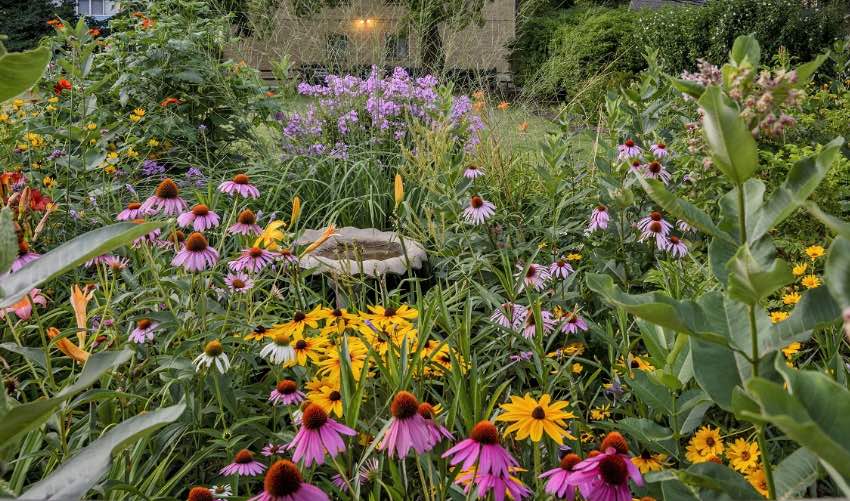After a dreary winter, spring has finally arrived! It’s time to shed our winter coats, trade them in for a sun hat and a pair of gardening gloves, and go dig into the dirt.
Spring is a time for growth, renewal, and, best of all, gardening. What will you plant this year? When will you plant it, and where? These answers will vary, but one eco-friendly gardening and landscaping technique should always be on your to-do list: utilizing native plants.
While most plants you find at the store are easy on the eyes, they may not work well in your local ecosystem. Invasive plants, like English ivy in the U.S., are actually harmful, threatening native wildlife, human health, and local economies.

Choose Native Plants
Experts advise gardeners to use native plants for a beautiful, low-maintenance, and exceptionally eco-friendly plot.
Depending on where you live, the plants that are considered native will differ. Discover what plants native in your area before you start. You can find quality native plants at most local nurseries and plant-focused businesses, but avoid shopping for plants at big-box stores, as their selection of native species is often limited.
The best part about using native plants? You can grow them even if you don’t have a well-established green thumb. Because they’re suited to your local environment, they don’t require a ton of care and tend to do well even if left alone.
Native Plants Save Water
Because they thrive in your local environment, native plants are in tune with your climate. While sun exposure and watering are huge factors in plant growth, they’re less of a concern when you’re planting native species.
Still, native plants do need a resting place with adequate amounts of sunlight and protection from pests like rats and insects, but they typically require less care overall than non-native species.
Nature evolved to make your climate perfectly suited for the plants that grow there natively. That means your soil likely already contains all the nutrient native plants need, so you can skip those fancy fertilizers that often have detrimental environmental effects.
Native plant species also save water because they don’t need a lot more than naturally occurring rainfall. Not only does that save you money on your water bill, but it also allows you to do your part to conserve the planet’s limited freshwater reserves.
By transitioning your green yard or garden to one with native plants, you’ll shrink your carbon footprint and relinquish the reliance on unsustainable water-harvesting practices like tapping into aquifers and groundwater supplies.

Gardening for Wildlife
Native plants provide cozy homes for all the critters local to your area. Birds and insects, especially, need native plants to thrive. The iconic monarch butterfly is an example.
Unfortunately, urbanization and modern landscaping threaten these species, leaving them without proper habitats. One positive solution to this problem is planting native species to support these animals in need. In turn, you’ll support your entire local ecosystem.
As a bonus, you’ll discover world-class wildlife-watching in your own backyard.
This article was originally published on April 10, 2019.
The post Native Plants: the Key to Eco-Friendly Gardening appeared first on Earth911.








